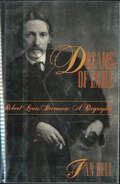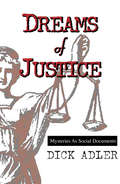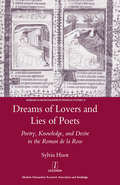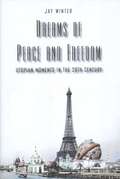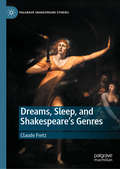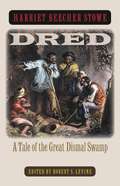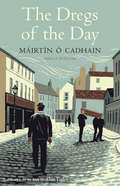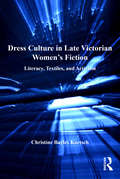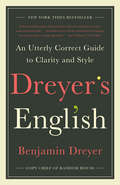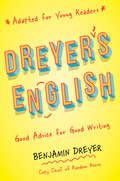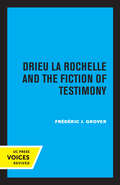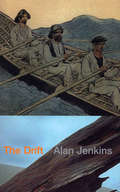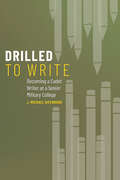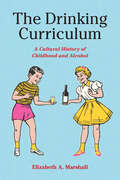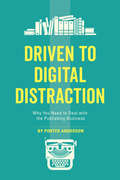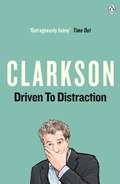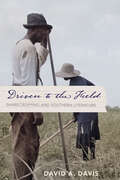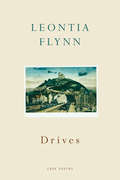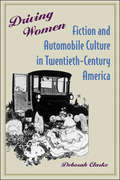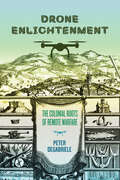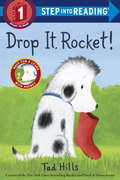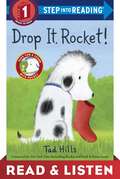- Table View
- List View
Dreams of Exile: Robert Louis Stevenson: A Biography
by Ian Bell"Fiction is to grown men what play is to the child," Robert Louis Stevenson once said in a statement that perfectly captures the magic of his own fiction. Immensely popular during is brief life--he died in 1894 at the age of forty-four--he has never lacked for readers since. In the century that followed his death, many biographies have been written, each with its own R.L.S.: the sickly, dreaming child; the Bohemian dandy outraging Victorian Edinburgh; the romantic wanderer leading his donkey through the wilds of the Cevennes; the frail genius doomed to die young. For some, he is the man of action avid for experience, filled with wanderlust; for others, the writer of stories beloved by children and familiar from innumerable film ad television dramas. Still others know him as the essayist whose skills matched William Hazlitt's and the novelist to whom even Henry James deffered. All of these are R.L.S., but none is the full Stevenson.Now, in this new and acclaimed biography, Ian Bell attempts to see Stevenson whole, to trace the line of descent form the son of Calvinist engineers to the man who ended his days as Tusitala among the Samoan islanders. Understanding that for Stevenson geography mattered, Bell sets out to discover the complete man through the places he lived and the people he lived among as well as through the books that poured from him during his all-too-short literary life. As such, Dreams of Exile is both literary biogrpahy and travel narrative. It follows Stevenson's development as an artist and as a man by following his often chaotic progress from continent to continent, in good health and in bad, in poverty and in wealth. Along the way, it reveals his often tortured relations with his family, his robust sexuality, and the mystery of his stormy marriage to a woman many years his senior. But perhaps Bell's most important contribution is to rescue R.L.S. from the many conflicting and often romanticized images that have continued to surround him, and in the process to make a telling case for Stevenson's genius as a writer.
Dreams of Justice
by Dick AdlerDick Adler reviews mysteries and thrillers every other week in his Crime Watch column for the Chicago Tribune. He is the co-author, with the late Edmund G. (Pat) Brown, of Public Justice, Private Mercy: A Governor's Education On Death Row. Anthony Lewis in the New York Times Book Review called it "a compelling and important book," and Jonathan Kirsch in the Los Angeles Times said, "Some of the most fascinating passages are the dozen or so case histories of the men and women themselves, the stuff of hard-boiled detective fiction come to life." Adler has also written Sleeping with Moscow, an account of the Richard Miller FBI espionage case. His mystery novel, The Mozart Code, was published in May, 1999, as an electronic book and was a Frankfurt eBook Award nominee in 2000.
Dreams of Lovers and Lies of Poets: Poetry, Knowledge and Desire in the "Roman De La Rose"
by Sylvia HuotThe Roman de la Rose explicitly offers an 'art of love', while also repeatedly asserting that the experience of love is impossible to put into words. An examination of the intertextual density of the Rose , with its citations and adaptations of a range of Latin authors, shows that the discourse of bodily desire, pleasure, and trauma emerges indirectly from the juxtaposition and conflation of sources. Huot's new book focuses on Guillaume de Lorris's use of the Ovidian corpus, and on Jean de Meun's dazzling orchestration of allusions to a wider range of Latin writers: principally Ovid, Boethius, and Virgil, but also including John of Salisbury and Alain de Lille. In both parts of the Rose , poetic allegory is a language that can express the unspeakable and the ineffable.
Dreams of Modernity
by Laura MarcusLaura Marcus is one of the leading literary critics of modernist literature and culture. Dreams of Modernity: Psychoanalysis, Literature, Cinema covers the period from around 1880 to 1930, when modernity as a form of social and cultural life fed into the beginnings of modernism as a cultural form. Railways, cinema, psychoanalysis and the literature of detection - and their impact on modern sensibility - are four of the chief subjects explored. Marcus also stresses the creativity of modernist women writers, including H. D. , Dorothy Richardson and Virginia Woolf. The overriding themes of this work bear on the understanding of the early twentieth century as a transitional age, thus raising the question of how 'the moderns' understood the conditions of their own modernity.
Dreams of Peace and Freedom: Utopian Moments in the Twentieth Century
by Jay WinterIn the wake of the monstrous projects of Hitler, Stalin, Mao, and others in the twentieth century, the idea of utopia has been discredited. Yet, historian Jay Winter suggests, alongside the "major utopians" who murdered millions in their attempts to transform the world were disparate groups of people trying in their own separate ways to imagine a radically better world. This original book focuses on some of the twentieth-century's "minor utopias" whose stories, overshadowed by the horrors of the Holocaust and the Gulag, suggest that the future need not be as catastrophic as the past. The book is organized around six key moments when utopian ideas and projects flourished in Europe: 1900 (the Paris World's Fair), 1919 (the Paris Peace Conference), 1937 (the Paris exhibition celebrating science and light), 1948 (the Universal Declaration of Human Rights), 1968 (moral indictments and student revolt), and 1992 (the emergence of visions of global citizenship). Winter considers the dreamers and the nature of their dreams as well as their connections to one another and to the history of utopian thought. By restoring minor utopias to their rightful place in the recent past, Winter fills an important gap in the history of social thought and action in the twentieth century.
Dreams, Sleep, and Shakespeare’s Genres (Palgrave Shakespeare Studies)
by Claude FretzThis book explores how Shakespeare uses images of dreams and sleep to define his dramatic worlds. Surveying Shakespeare’s comedies, tragedies, histories, and late plays, it argues that Shakespeare systematically exploits early modern physiological, religious, and political understandings of dreams and sleep in order to reshape conventions of dramatic genre, and to experiment with dream-inspired plots.The book discusses the significance of dreams and sleep in early modern culture, and explores the dramatic opportunities that this offered to Shakespeare and his contemporaries. It also offers new insights into how Shakespeare adapted earlier literary models of dreams and sleep – including those found in classical drama, in medieval dream visions, and in native English dramatic traditions. The book appeals to academics, students, teachers, and practitioners in the fields of literature, drama, and cultural history, as well as to general readers interested in Shakespeare’s works and their cultural context.
Dred
by Harriet Beecher StoweHarriet Beecher Stowe's second antislavery novel was written partly in response to the criticisms of Uncle Tom's Cabin (1852) by both white Southerners and black abolitionists. In Dred (1856), Stowe attempts to explore the issue of slavery from an African American perspective.Through the compelling stories of Nina Gordon, the mistress of a slave plantation, and Dred, a black revolutionary, Stowe brings to life conflicting beliefs about race, the institution of slavery, and the possibilities of violent resistance. Probing the political and spiritual goals that fuel Dred's rebellion, Stowe creates a figure far different from the acquiescent Christian martyr Uncle Tom. In his introduction to the classic novel, Robert S. Levine outlines the antislavery debates in which Stowe had become deeply involved before and during her writing of Dred. Levine shows that in addition to its significance in literary history, the novel remains relevant to present-day discussions of cross-racial perspectives.
The Dregs of the Day (The Margellos World Republic of Letters)
by Máirtín Ó CadhainA riveting English translation the Irish classic tale of heartache, death, and loneliness by the beloved author of The Dirty Dust The final published work by the renowned Máirtín Ó Cadhain, this novella follows a widower as he attempts to plan his wife’s funeral arrangements without money, direction, or whiskey. Thrown into a desert of unknowing, he knows not where to turn or what to do. In a poignant meditation on regret, possibilities, maybes, and avoidances, the author portrays a man hopelessly watching as the people in the world go about their lives around him. With black humor sprinkled throughout, the book, a profound look at psychic loss and puzzlement by a writer at the height of his powers, illustrates Ó Cadhain’s conviction that tragedy and comedy are inextricably connected. Bringing this work to an English-speaking audience for the first time, this volume includes an illuminating introduction by Alan Titley, whose skillful translation captures the spirit and tone of the original.
Drehbuchforschung: Perspektiven auf Texte und Prozesse
by Jan Henschen Florian Krauß Alexandra Ksenofontova Claus TieberDie Drehbuchforschung ist ein junges, sich rasch entwickelndes internationales Forschungsfeld. Der Sammelband führt Forschungen aus dem deutschsprachigen Raum zusammen, die sich mit dem Drehbuch als schriftliches Artefakt und als Teil des Produktionsprozesses auseinandersetzen. Neben grundlegenden theoretischen Konzepten der Drehbuchforschung stehen historische und archivbasierte Analysen sowie gegenwartsbezogene Problemstellungen im Vordergrund. Praxisnah finden außerdem Akteure und Abläufe der Drehbuchentwicklung sowie Fragen der Dramaturgie Beachtung. Der Sammelband verschafft somit einen Überblick über die Bandbreite interdisziplinärer Ansätze des Forschungsfeldes und veranschaulicht das Erkenntnispotential der aktuellen Drehbuchforschung.
Dress Culture in Late Victorian Women's Fiction: Literacy, Textiles, and Activism
by Christine Bayles KortschIn her immensely readable and richly documented book, Christine Bayles Kortsch asks us to shift our understanding of late Victorian literary culture by examining its inextricable relationship with the material culture of dress and sewing. Even as the Education Acts of 1870, 1880, and 1891 extended the privilege of print literacy to greater numbers of the populace, stitching samplers continued to be a way of acculturating girls in both print literacy and what Kortsch terms "dress culture." Kortsch explores nineteenth-century women's education, sewing and needlework, mainstream fashion, alternative dress movements, working-class labor in the textile industry, and forms of social activism, showing how dual literacy in dress and print cultures linked women writers with their readers. Focusing on Victorian novels written between 1870 and 1900, Kortsch examines fiction by writers such as Olive Schreiner, Ella Hepworth Dixon, Margaret Oliphant, Sarah Grand, and Gertrude Dix, with attention to influential predecessors like Elizabeth Gaskell, Charlotte Brontë, and George Eliot. Periodicals, with their juxtaposition of journalism, fiction, and articles on dress and sewing are particularly fertile sites for exploring the close linkages between print and dress cultures. Informed by her examinations of costume collections in British and American museums, Kortsch's book broadens our view of New Woman fiction and its relationship both to dress culture and to contemporary women's fiction.
Dressed to Kill
by Elizabeth RhodesThe noble wives in María de Zayas's Desengaños suffer terrible fates: one is beheaded, another poisoned, one is cemented into a chimney, while yet another is locked into a tiny wall closet where she dies. The hallmark of Zayas's aesthetics, these characters are the central reason why her fiction has increased in popularity through the ages. Yet their stories pose an apparent contradiction between the author's pro-female rhetoric and her gusto for killing model women, then beautifying their mutilated cadavers.Dressed to Kill reconciles Zayas's Desengaños with the age in which it was written, contextualizing the book in baroque poetics, the Spanish honour code, and fifteenth-century martyr saints' lives. Elizabeth Rhodes elegantly uncovers Zayas's intention to reform the Spanish nobility by displaying noble misbehaviour and its deadly consequences. Her book concludes by detailing the Desengaños' intriguing influence on the aesthetic base of Gothic literature by revealing that its authors were avid readers of Zayas.
Dreyer's English: An Utterly Correct Guide to Clarity and Style
by Benjamin DreyerNEW YORK TIMES BESTSELLER • A sharp, funny grammar guide they&’ll actually want to read, from Random House&’s longtime copy chief and one of Twitter&’s leading language gurus NAMED ONE OF THE BEST BOOKS OF THE YEAR BY O: The Oprah Magazine • Paste • Shelf Awareness&“Essential (and delightful!)&”—People We all write, all the time: books, blogs, emails. Lots and lots of emails. And we all want to write better. Benjamin Dreyer is here to help. As Random House&’s copy chief, Dreyer has upheld the standards of the legendary publisher for more than two decades. He is beloved by authors and editors alike—not to mention his followers on social media—for deconstructing the English language with playful erudition. Now he distills everything he has learned from the myriad books he has copyedited and overseen into a useful guide not just for writers but for everyone who wants to put their best prose foot forward. As authoritative as it is amusing, Dreyer&’s English offers lessons on punctuation, from the underloved semicolon to the enigmatic en dash; the rules and nonrules of grammar, including why it&’s OK to begin a sentence with &“And&” or &“But&” and to confidently split an infinitive; and why it&’s best to avoid the doldrums of the Wan Intensifiers and Throat Clearers, including &“very,&” &“rather,&” &“of course,&” and the dreaded &“actually.&” Dreyer will let you know whether &“alright&” is all right (sometimes) and even help you brush up on your spelling—though, as he notes, &“The problem with mnemonic devices is that I can never remember them.&” And yes: &“Only godless savages eschew the series comma.&” Chockful of advice, insider wisdom, and fun facts, this book will prove to be invaluable to everyone who wants to shore up their writing skills, mandatory for people who spend their time editing and shaping other people&’s prose, and—perhaps best of all—an utter treat for anyone who simply revels in language.Praise for Dreyer&’s English&“Playful, smart, self-conscious, and personal . . . One encounters wisdom and good sense on nearly every page of Dreyer&’s English.&”—The Wall Street Journal &“Destined to become a classic.&”—The Millions &“Dreyer can help you . . . with tips on punctuation and spelling. . . . Even better: He&’ll entertain you while he&’s at it.&”—Newsday
Dreyer's English (Adapted for Young Readers): Good Advice for Good Writing
by Benjamin DreyerAdapted from the New York Times bestseller by Random House's longtime copy chief, this informative and witty guide to writing and grammar, written especially for a younger audience, entertains as well as instructs.Full of advice, insider wisdom, and fascinating facts, this book will prove to be invaluable to anyone who wants to be confident in their writing skills, or anyone who enjoys the power of language. Explored throughout are the mysteries of using punctuation, word choice decisions, and more, presented in a clear, concise and accessible manner made fun!Praise for the New York Times bestseller DREYER'S ENGLISH: An Utterly Correct Guide to Clarity and StyleNAMED ONE OF THE BEST BOOKS OF THE YEAR BY O: The Oprah Magazine,Paste, and Shelf Awareness"Essential (and delightful!)" --People"Playful, smart, self-conscious, and personal . . . One encounters wisdom and good sense on nearly every page." --The Wall Street Journal"Destined to become a classic." --The Millions"Dreyer can help you . . . with tips on punctuation and spelling. . . . Even better: He'll entertain you while he's at it." --Newsday
Drieu La Rochelle and the Fiction of Testimony
by Frederic J. GroverThis title is part of UC Press's Voices Revived program, which commemorates University of California Press’s mission to seek out and cultivate the brightest minds and give them voice, reach, and impact. Drawing on a backlist dating to 1893, Voices Revived makes high-quality, peer-reviewed scholarship accessible once again using print-on-demand technology. This title was originally published in 1958.
The Drift
by Alan JenkinsALAN JENKINS - POERTY IS EXHILARATING. . . . . IT IS CHARGED WITH EROTIC ENERGY, RAGE, SORROW AND CONFUSION. - DAVID LEHMAN The poeoms in Alan Jenkin's magnificent new collection are closely linked, forming a movingly autobiographical book which deals with the disjunction between the aspirations of youth and the realities of middle-age. The narrator looks back on his twenties, full of the grand ambition to be the next Rimbaud, and wryly contrasts it with his current situation: friends dead, women lost, opportunities missed. Images of drifting, of the random patterns that fate imposes on existence, weave their way through poems full of sea-scapes and sailing boats. Ghosts loom through the mist; objects imbued with memory accumulate like driftwood. But although Alan Jenkins writes about a sense of loss and failure -his rich poetry formally dextrous and inventive, witty and subtle in its allusions - acts as a counterbalance, showing how the twisting of an emotion into shape can salvage feelings of pointlessness. Through his personal experience, he explores themes that will resonate with a broad audience: the difference between men and women.
Drilled to Write: Becoming a Cadet Writer at a Senior Military College
by J. Michael RifenburgDrilled to Write offers a rich account of US Army cadets navigating the unique demands of Army writing at a senior military college. In this longitudinal case study, J. Michael Rifenburg follows one cadet, Logan Blackwell, for four years and traces how he conceptualizes Army writing and Army genres through immersion in military science classes, tactical exercises in the Appalachian Mountains, and specialized programs like Airborne School. Drawing from research on rhetorical genre studies, writing transfer, and materiality, Drilled to Write speaks to scholars in writing studies committed to capturing how students understand their own writing development. Collectively, these chapters articulate four ways Blackwell leveraged resources through ROTC to become a cadet writer at this military college. Each chapter is dedicated to one year of his undergraduate experience with focus on curricular writing for his business management major and military science classes as well as his extracurricular writing, like his Ballroom Dance Club bylaws and a three-thousand-word short story. In Drilled to Write, Rifenburg invites readers to see how cadets are positioned between civilian and military life—a curiously liminal space where they develop as writers. Using Army ROTC as an entry into genre theory and larger conversations about the role higher education plays in developing Army officers, he shows how writing students develop genre awareness and flexibility while forging a personal identity.
The Drinking Curriculum: A Cultural History of Childhood and Alcohol
by Elizabeth MarshallA lively exploration into America’s preoccupation with childhood innocence and its corruptionIn The Drinking Curriculum, Elizabeth Marshall brings the taboo topic of alcohol and childhood into the limelight. Marshall coins the term “the drinking curriculum” to describe how a paradoxical set of cultural lessons about childhood are fueled by adult anxieties and preoccupations. By analyzing popular and widely accessible texts in visual culture—temperance tracts, cartoons, film, advertisements, and public-service announcements—Marshall demonstrates how youth are targets of mixed messages about intoxication. Those messages range from the overtly violent to the humorous, the moralistic to the profane. Offering a critical and, at times, irreverent analysis of dominant protectionist paradigms that sanctify childhood as implicitly innocent, The Drinking Curriculum centers the graphic narratives our culture uses to teach about alcohol, the roots of these pictorial tales in the nineteenth century, and the discursive hangover we nurse into the twenty-first.
Driven to Digital Distraction: Why You Need to Deal with the Publishing Business
by Porter Anderson"Publishing has now entered a state of continual change. That won't change." So says journalist and industry expert Porter Anderson in "Driven to Digital Distraction." In this exclusive e-book, you'll learn how and why you must become a digitally minded author to compete in the marketplace and treat your writing like a business rather than a hobby. Porter Anderson (@Porter_Anderson), BA, MA, MFA, is a journalist, speaker, and consultant specializing in book publishing. Formerly with CNN, the Village Voice, the Dallas Times Herald, and other media, he is editor in chief of Publishing Perspectives, the magazine for the international publishing industry, founded by German Book Office New York. With Jane Friedman, he produces The Hot Sheet newsletter, providing publishing industry news expressly for authors in a biweekly e-mail subscription. Anderson also writes the #MusicForWriters series on contemporary composers for Thought Catalog and is the former associate editor of TheFutureBook for London's The Bookseller. Learn more about Porter at porteranderson.com.
Driven to Distraction
by Jeremy ClarksonJeremy Clarkson is once more Driven to Distraction.Brace yourself. Clarkson's back.And he'd like to tell you what he thinks about some of the most awe-inspiring, earth-shatteringly fast and jaw-droppingly cool cars in the world (oh, and a few irredeemable disasters...).Or he would if he could just get one or two things off his chest first. Matters such as: * The prospect of having Terry Wogan as president* Why you'll never see a woman driving a Lexus * The unforeseen consequences of inadequate birth control * Why everyone should spend a weekend with a diggerDriven to Distraction is Jeremy Clarkson at full throttle. So buckle up, sit tight and enjoy the ride. You're in for a hell of a lot of laughs. Praise for Jeremy Clarkson:'Brilliant . . . laugh-out-loud' Daily Telegraph'Outrageously funny . . . will have you in stitches' Time Out'Very funny . . . I cracked up laughing on the tube' Evening Standard
Driven to the Field: Sharecropping and Southern Literature (The American South Series)
by David A. DavisDriven to the Field traces the culture of sharecropping—crucial to understanding life in the southern United States—from Emancipation to the twenty-first century. By reading dozens of works of literature in their historical context, David A. Davis demonstrates how sharecropping emerged, endured for a century, and continues to resonate in American culture. Following the end of slavery, sharecropping initially served as an expedient solution to a practical problem, but it quickly developed into an entrenched power structure situated between slavery and freedom that exploited the labor of Blacks and poor whites to produce agricultural commodities.Sharecropping was the economic linchpin in the South’s social structure, and the region’s political system, race relations, and cultural practices were inextricably linked with this peculiar form of tenant farming from the end of the Civil War through the civil rights movement. Driven to the Field analyzes literary portrayals of this system to explain how it defined the culture of the South, revealing multiple genres of literature that depicted sharecropping, such as cotton romances, agricultural uplift novels, proletarian sharecropper fiction, and sharecropper autobiographies—important works of American literature that have never before been evaluated and discussed in their proper context.
Drives
by Leontia FlynnFollowing on from the assured day-to-day poems of her first collection, Leontia Flynn's second, Drives, is a book of restless journeys - real and imaginary - interspersed with a series of sonnets on writers. Beginning in Belfast, where she lives, she visits a disjointed number of cities in Europe and the States - each one the occasion for an elliptical postcard home to herself.Alongside these reports from abroad, portraits of dead writers flicker through the pages of this book - Baudelaire, Proust and Beckett; Bishop, Plath and Virginia Woolf - all revealing aspects of themselves, their frailties and their sicknesses, but also, we suspect, aspects of their ventriloquising author.What these poems share is a furious refusal of received opinion, of a language recycled and redundant; they are raw exposed and angrily aware of distance - the distance between what one needs and what one receives, between love and what is lost. In particular, the lives here are haunted by the lost idyll of childhood, while poems about the poet's own mother and ageing father bring the collection to a close. With an alert ear for fracture and disarray and a tender eye for damage, Drives is a passionate enquiry into what shapes us as individuals.
Driving Women: Fiction and Automobile Culture in Twentieth-Century America
by Deborah ClarkeOver the years, cars have helped to define the experiences and self-perceptions of women in complex and sometimes unexpected ways. When women take the wheel, family structure and public space are reconfigured and re-gendered, creating a context for a literary tradition in which the car has served as a substitute for, an escape from, and an extension of the home, as well as a surrogate mother, a financial safeguard, and a means of self-expression.Driving Women examines the intersection of American fiction—primarily but not exclusively by women—and automobile culture. Deborah Clarke argues that issues critical to twentieth-century American society—technology, mobility, domesticity, and agency—are repeatedly articulated through women's relationships with cars. Women writers took surprisingly intense interest in car culture and its import for modern life, as the car, replete with material and symbolic meaning, recast literal and literary female power in the automotive age. Clarke draws on a wide range of literary works, both canonical and popular, to document women's fascination with cars from many perspectives: historical, psychological, economic, ethnic. Authors discussed include Wharton, Stein, Faulkner, O’Connor, Morrison, Erdrich, Mason, Kingsolver, Lopez, Kadohata, Smiley, Senna, Viramontes, Allison, and Silko. By investigating how cars can function as female space, reflect female identity, and reshape female agency, this engaging study opens up new angles from which to approach fiction by and about women and traces new directions in the intersection of literature, technology, and gender.
Drone Enlightenment: The Colonial Roots of Remote Warfare
by Peter DeGabrieleDrone warfare raises far-reaching questions about responsibility, war, and sovereignty. Who can be held accountable for drone strikes? Do drones conduct wars of national territories and sovereign boundaries? What does the occupation of a land or people look like if there are no boots on the ground? Focusing specifically on the United States' use of killer drones during the War on Terror, Drone Enlightenment argues that this kind of warfare has its intellectual, ideological, and practical roots in the way the Enlightenment imagined moral agency, occupation, race, and sovereignty. As a consequence of seeing drone warfare as a creature of the Enlightenment, and through innovative readings of Hobbes, Locke, Grotius, Pufendorf, Barbeyrac, and Swift, the book also reevaluates the Enlightenment itself.
Drop It, Rocket! (Step into Reading)
by Tad HillsRocket, the beloved dog from the New York Times bestselling picture books How Rocket Learned to Read and Rocket Writes a Story, is back in a leveled reader. Rocket is ready to find new words for his word tree with his teacher, the little yellow bird. He finds a leaf, a hat, and a star . . . but when he finds a red boot, he doesn't want to let go. What will make Rocket drop it? With predictable patterns, simple words, lots of repetition, and bright, colorful illustrations, young readers will love this new Rocket book, which they can read all by themselves!
Drop It, Rocket!: Read & Listen Edition (Rocket)
by Tad HillsRocket, the beloved dog from the New York Times bestselling picture books How Rocket Learned to Read and Rocket Writes a Story, is back in a leveled reader. Rocket is ready to find new words for his word tree with his teacher, the little yellow bird. He finds a leaf, a hat, and a star . . . but when he finds a red boot, he doesn&’t want to let go. What will make Rocket drop it? With predictable patterns, simple words, lots of repetition, and bright, colorful illustrations, young readers will love this new Rocket book, which they can read all by themselves!This Read & Listen edition contains audio narration.
